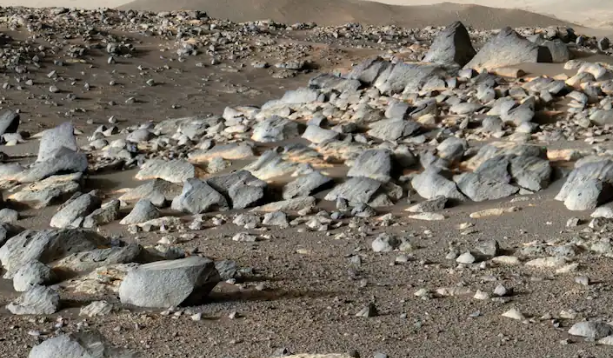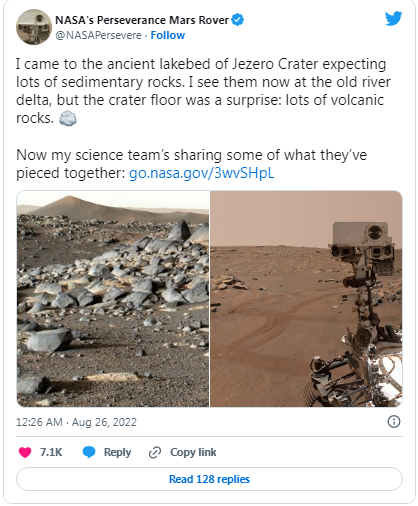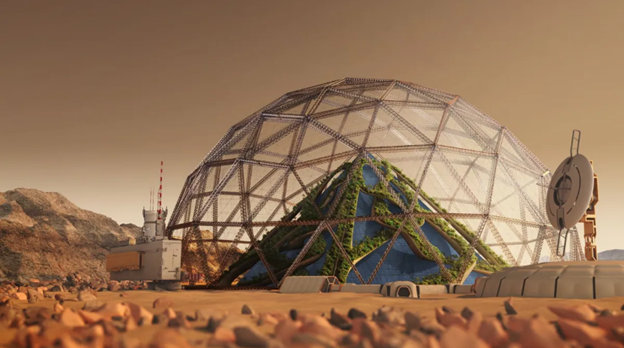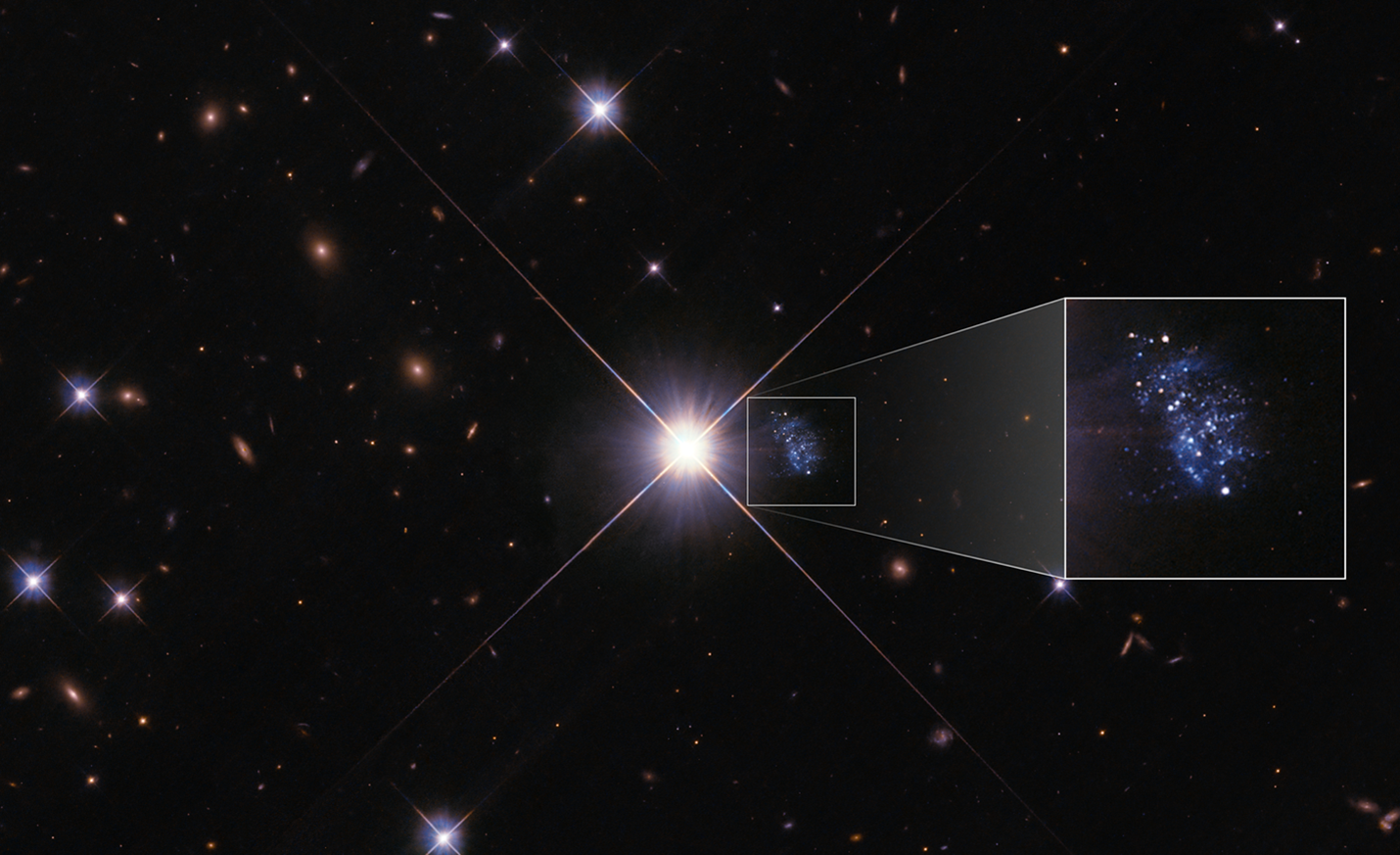by Rida Fatima
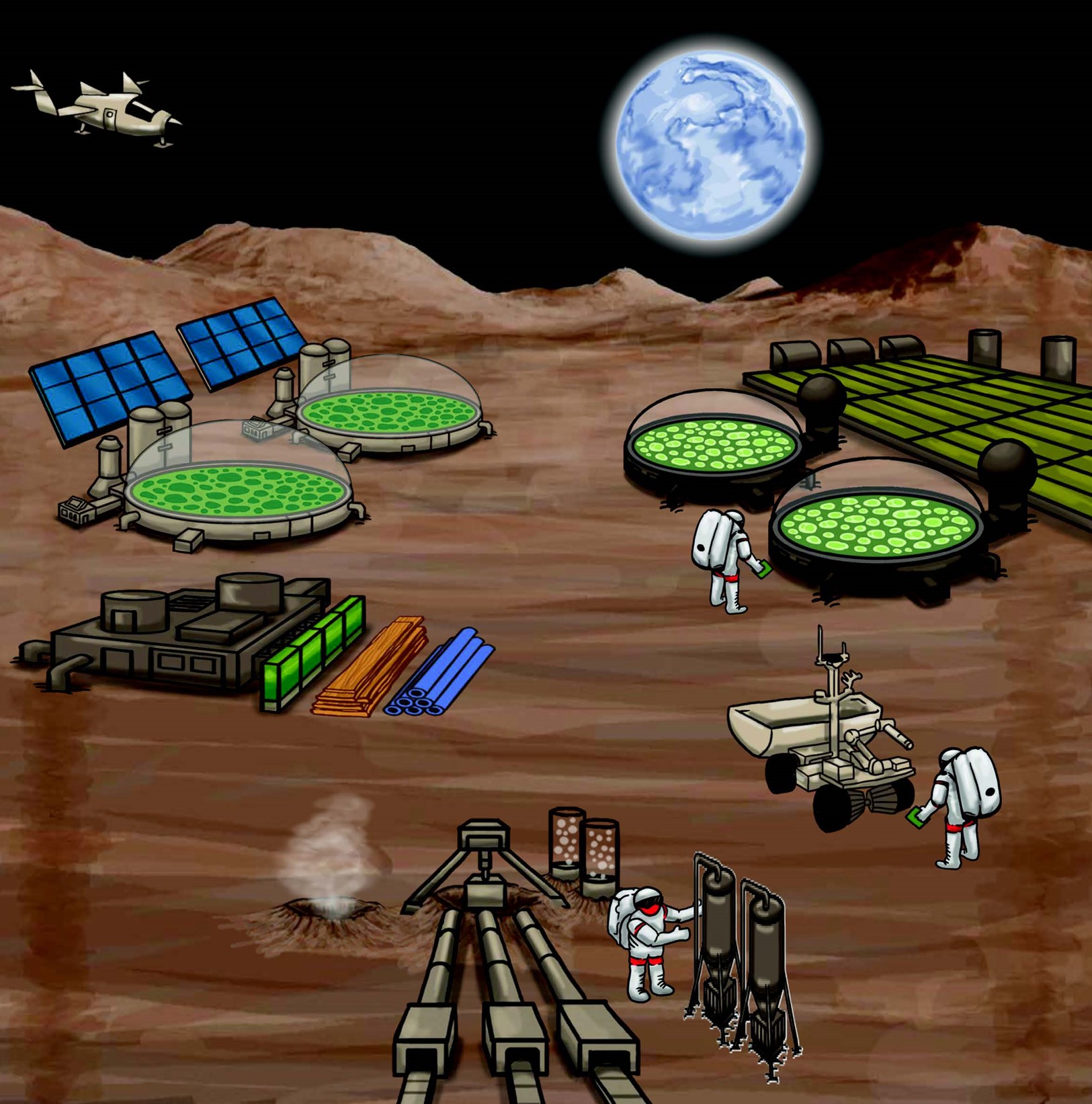
(Figure 1: After humans reach an extraterrestrial destination, microbial-based biomanufacturing might change everything and become a key source of making life interplanetary. (This photo is provided by Royal Academy Interface))
As humans enter a new era of exploring the cosmos to know what lies beyond our sky, there are many challenges they must overcome. New technologies are being brought to light by the innovators of science to allow them to travel further from planet Earth. Space synthetic biology is a promising life support approach, that minimizes the payload launched and increases reuse and recycling. It also uses local resources for the creation of essential products needed by the astronauts aboard ISS. The application of synthetic biology in space exploration is the key to future manned space missions.
Target Areas For Synthetic Biology In Space
The 4 main target areas on which scientists are focusing are how synthetic biology can make fuel generation, biopolymer synthesis, food production, and pharmaceutical manufacture more effective and efficient. Microbial biomanufacturing also has a lot of significance as it can lower the mass of manufactured fuel by 56%. In addition, bacteria might entirely restock exhausted or contaminated medicinal supplies, enabling independence from the resupply cargo missions that take up to 210 days to reach Mars.
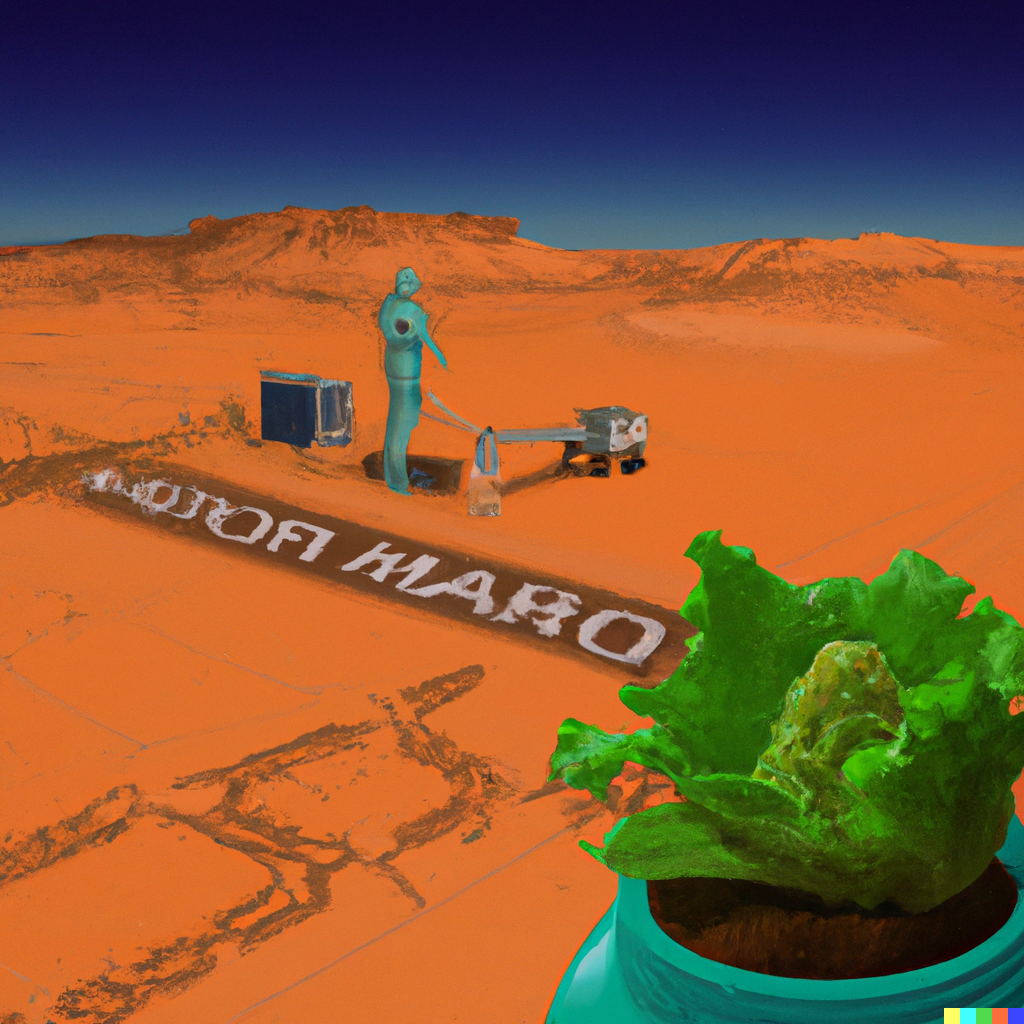
(Mars Food Production, augmented by Synthetic Biology (dall-e))
Synthetic Biology Application For Rocket Fuel
Using biotechnology, scientists have developed a strategy for producing crucial propulsion fuel for the journey to Mars. This study seeks to provide numerous significant benefits over existing proposed ways for producing Mars rocket fuel. Considerable synthesis of biological propellants is projected to become a vital technology for future Mars exploration missions.
As the cost of launching and sending payload to Mars is extremely expensive, it makes sense to manufacture some of the needed fuel in space instead of bringing it all from Earth. The generation of a methane-oxygen fuel mixture is being planned by utilizing carbon dioxide, it will be needed for the return trip from Mars. Apart from this, recently another fuel blend idea has gained attention due to its efficiency and safety. It involves blending nitrous oxide along with a few specific hydrocarbons, though studies and research are still going on to check how this blend can be generated in space. Here, synthetic biology is helping in two ways; if a methane-oxygen fuel blend is chosen then it will increase the savings. The generation of nitrous oxide hydrocarbon fuel becomes more efficient and suitable.
Manufacturing Of Space Medicine
Drugs have faster expiry in space due to exposure to harmful space radiation. There is a high chance of lowering the tolerability of solid medication formulations by up to 3 quarters. The capacity to synthesise pharmaceuticals in space is very important for astronauts in long-haul space flights. Synthetic biology medication manufacturing is a potential replacement for conventional drug production methods in space. It also significantly minimises the requirement for emergency payload supplies. That’s where Space Synthetic Biology (SynBio) project comes in, which was introduced by NASA for developing technology to produce valuable items such as vitamins and medications on demand.
Astronauts can take the only renewable and natural resource from Earth into space: Cells. It can either be fungi or bacteria cells. They can be repurposed or modified to manufacture specific materials such as bioplastics using synthetic DNA. These bioplastics can then be introduced in 3-D printers to create anything that astronauts may require during their space missions. The constructed material can be anything such as electronic gadgets or medical equipment.
These innovative technologies are still evolving, and a long-duration human space trip is still several years away. An increase in mass savings occurs when the supplied feedstock essential to 3-D print a lunar or Martian habitat is substituted for the shipped mass required to biologically create the feedstock on location. Nevertheless, 3-D printing in space is still new and unproven. Additionally, the production of printer feedstock for this purpose has yet to be thoroughly investigated.
Significant Role In Food Production
The BioNutrients experiment is part of US space agency NASA’s SynBio project. It is located at NASA’s Ames Research Center in California’s Silicon Valley. It will assess and evaluate an in-space nutrient production approach that employs genetically-engineered baker’s yeast and a longer shelf growth substrate. The aim is to produce the antioxidants that are mostly found in carrots, bell peppers, and vegetables. Beta carotene and zeaxanthin are included in such antioxidants.
The first batch of “BioNutrient” was sent to the ISS in April 2019. The length of experiment was decided to be five years by the SynBio team. Dehydrated yeast along with their food source was present in BioNutrient packs. To begin the testing, astronauts aboard the International Space Station added sterile water to the bag. It was thoroughly mixed, and kept in a warm place for 48 hours. It was frozen for further analysis to be done on Earth to check how well the system performed and how much yeast grew in the BioNutrient packets. Not only that, but the SynBio project team is also working on a mechanism that chemically transforms CO2 and H2O into organic molecules that can “feed” microbial biomanufacturing systems. It will also allow them to produce a variety of items like food, medicines, and plastics. This method could be widely used to generate these things in a sustainable manner on Earth.
Future Of Space Synthetic Biology
Space synthetic biology is truly ground-breaking. Abiotic technologies were developed for decades before they were successfully utilized in space, and biological technologies like synthetic biology are only now seeing development efforts. Of course, these technologies have some catching up to do, but it turns out that they may not be too far behind, and in some cases, the technologies may already be superior to their abiotic counterparts. This innovative technological field of science holds great future promise as a new and exciting biotechnology field, with numerous directions for fruitful research that are grounded in technologies already in development today.
Bibliography
- Amor A. Menezes, M. G. (2015, December 06). Grand challenges in space synthetic biology . Retrieved from https://www.ncbi.nlm.nih.gov/pmc/articles/PMC4707852/
- Yarris, L. (2014, November 05). Synthetic Biology for Space Exploration . Retrieved from Berkeley Lab: https://newscenter.lbl.gov/2014/11/05/synthetic-biology-for-space-exploration/

